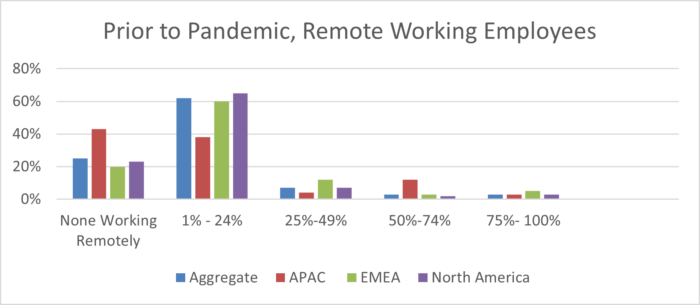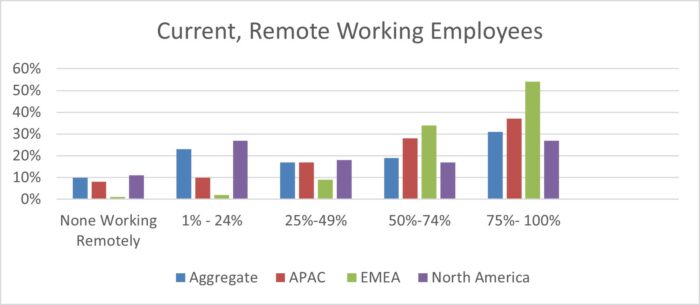Where to from here – HR in the year ahead
- HRM Asia Newsroom

We will all look back on the last few years as a defining moment in our collective memories. Literally overnight, HR functions were asked to reimagine the work environment and make ongoing critical decisions about the safety and sustainability of the workplace.
Global organisation leaders had to rapidly figure out how to ramp up or down employment and business operations on a country-by-country basis as the pandemic’s health concerns ebbed or increased regionally.
The recent global crisis brought into focus just how diverse we are when it comes to achieving business outcomes and meeting the needs of our employees. Health care and grocery stores saw rapidly increasing workloads for front-line employees, while travel and entertainment industries furloughed thousands of field employees overnight.
Some organisations managed the crisis with a laser focus on the bottom line, keeping workers in possibly unsafe environments or rushing layoffs without proper communications. Other organisations chose to gather data, focus on safety, and make leadership-level sacrifices, providing clear communication during workforce reductions or increases, and innovating where possible.

Source: Sapient Insights 2020-2021 HR Systems Survey White Paper, 23rd Annual Edition
The number one response to the global pandemic, in almost every industry and region Sapient Insights surveyed for the 2020-2021 Annual HR Systems Survey, 23rd Annual Edition, was redistribution of an organisation’s critical workforce.
Organisations headquartered in the Asia-Pacific region focused heavily on increasing non-HR technology spending and rapid hiring of critical roles and were less likely than other regions to temporarily furlough workers.
The work of HR has always been a combined response to business needs and societal changes. In this new era, an outcome-focused approach to HR shifts the focus from reactionary to visionary — a vision that supports achieving business outcomes in a sustainable and ethical manner.

Source: Sapient Insights 2020-2021 HR Systems Survey White Paper, 23rd Annual Edition
In an outcome-focused HR environment, financial metrics are tightly connected to critical employee outcomes such as employee health and safety, engagement, and diversity alongside long-term business outcomes like market share, brand, and innovation.
Sapient Insights, Annual HR Systems Survey research showed that organisations that invested in talent management practices aligned with business outcomes prior to the global crisis, were more likely to take strategic steps to increase and redistribute critical workforces with the tools they needed.
The role of HR technology in new work environments
Tomorrow’s work environment may look vastly different, but it also may not. All the commentators on this topic forget that we as business and HR leaders are choosing “how” we go back to work.
Some organisations are heading back to work, adhering only to the minimum compliance requirements, and making very few changes to address this new world of work, while others are being more imaginative in how work can get done in this new environment.
One way global HR leaders are expanding the notion of work is by offering continued support for remote work. The options for remote work have expanded exponentially overnight, and as you can see in the chart a large percentage of organisations are now embracing a hybrid work model.
In the Asia-Pacific region, we saw a dramatic shift from 43% of organisations with no remote work options for employees prior to the pandemic, to just 8% of organisations today, and more dramatically 37% of organisations with 75 to 100% of their workforces still working remotely.

Source: Sapient Insights 2020-2021 HR Systems Survey Data, 23rd Annual Edition

Source: Sapient Insights 2021-2022 HR Systems Survey Preliminary Data, 24th Annual Edition
Increased remote workforces have led to increased investments in both HR and Non-HR technology to support the employee, business performance, and data security and compliance requirements. Asia-Pacific organisations were much less likely to purchase remote work equipment, perhaps because of the tools already in use.

Source: Sapient Insights 2021-2022 HR Systems Survey Preliminary Data, 24th Annual Edition
In addition to remote working, other HR systems investments and process changes provide a more nuanced view of how work may change for many employees in coming years. These investments include:
- Employee tracking and contact tracing applications.
- Employee communication and service delivery applications.
- Updated payroll applications, that provided more flexibility in pay options.
- Updated scheduling and productivity applications, focused on managing contact risks and pod-based work environments.
- Employee health and safety applications, focused on both physical and mental health issues.
The global crisis has propelled us to look more broadly at HR’s role in our business environments and invest heavily in new and innovative technology areas – but organisations that continue to focus on achieving ethical and sustainable business outcomes through their HR Technology environments will be the most successful.
Investment in any HR application can be costly and should only be undertaken with a clear understanding of how to maximise adoption to achieve the stated business goals.
Misalignment in any number of areas such as strategy, culture, features, or user expectations can lead to low adoption, lack of data, no return on value or investment, and missed outcomes. Developing a clear blueprint of your HR systems environment provides a common basis for acquiring and optimising your HR applications.
This is the time to rethink our role in HR, and to consider what it means to be strategic in both our approach to HR as well as our supporting systems. Just 39% of organisations who participated in Sapient Insights 2020-2021 Annual HR Systems Survey stated their HR System environments were being utilised to inform business strategy in the last year.
This percentage had not increased from the previous year, but we wonder if another 12 months of crisis will see a change in how organisations are leveraging their HR applications. We also found that 36% of organisations stated they were practicing Enterprise Workforce Planning last year, a 30% increase over the previous year.
We have seen amazing stories of innovation in the last year that provide a model for what the future of HR could look like, if we only take the opportunity to act.
By Philippa Penfold, CEO and Co-Founder, People Collider; and Stacey Harris, Chief Research Officer, Sapient Insights Group. Join Harris at HR Tech Festival Asia Online 2021 on Thursday, September 23 at 2pm (SGT), where she will be presenting a session titled Global Insights Into Emerging Trends On HR and Workforce Planning Technology.






